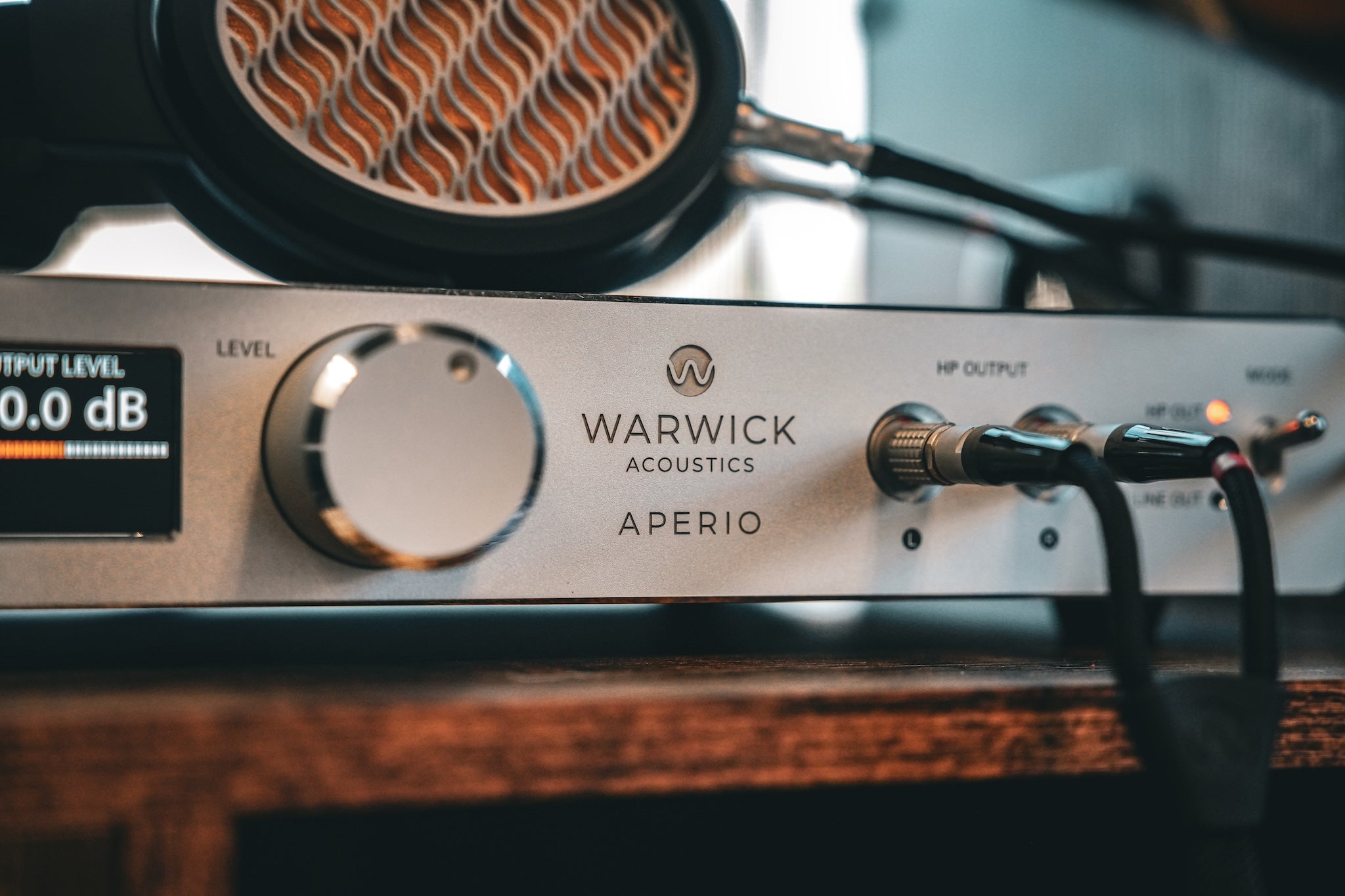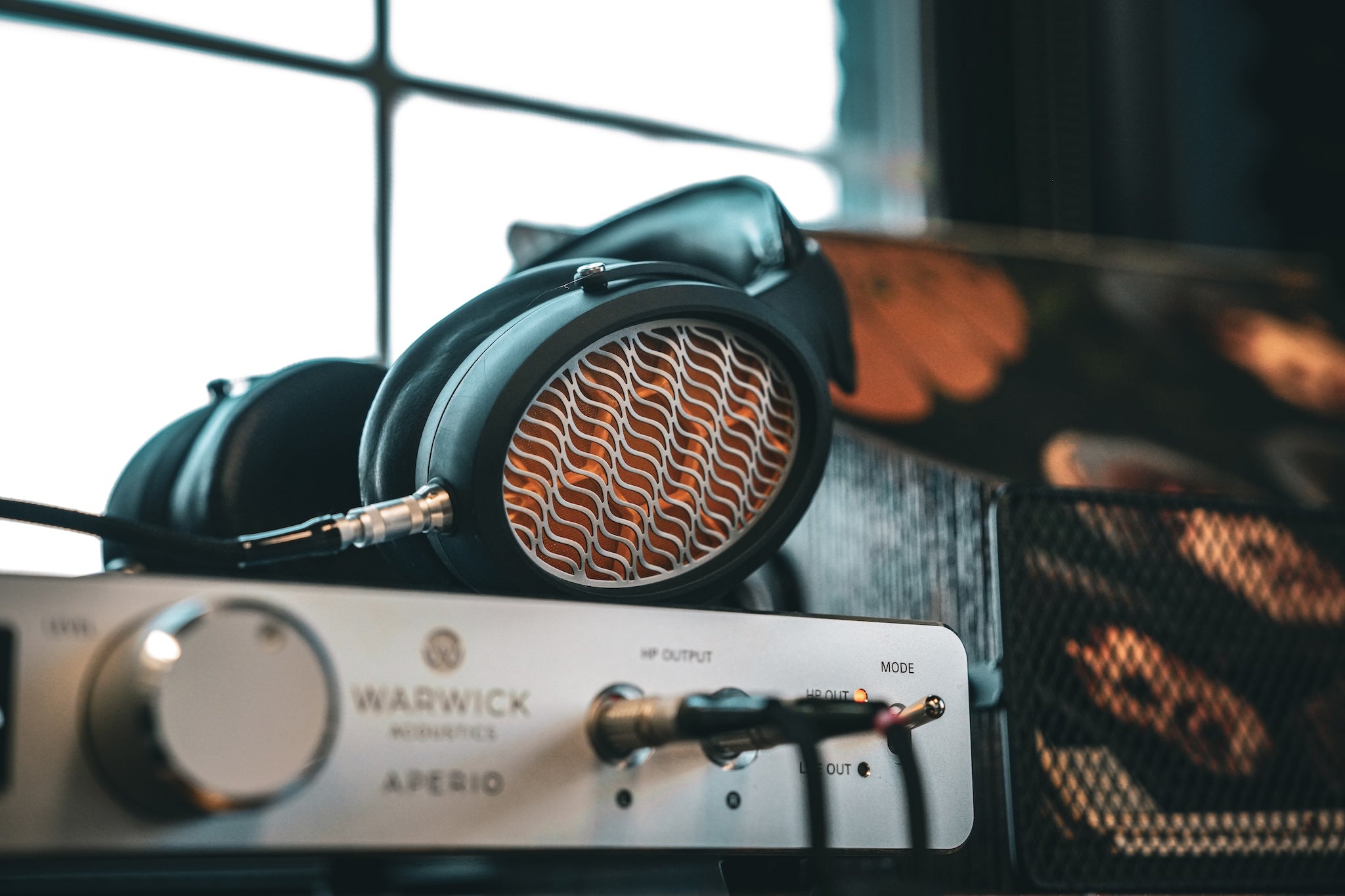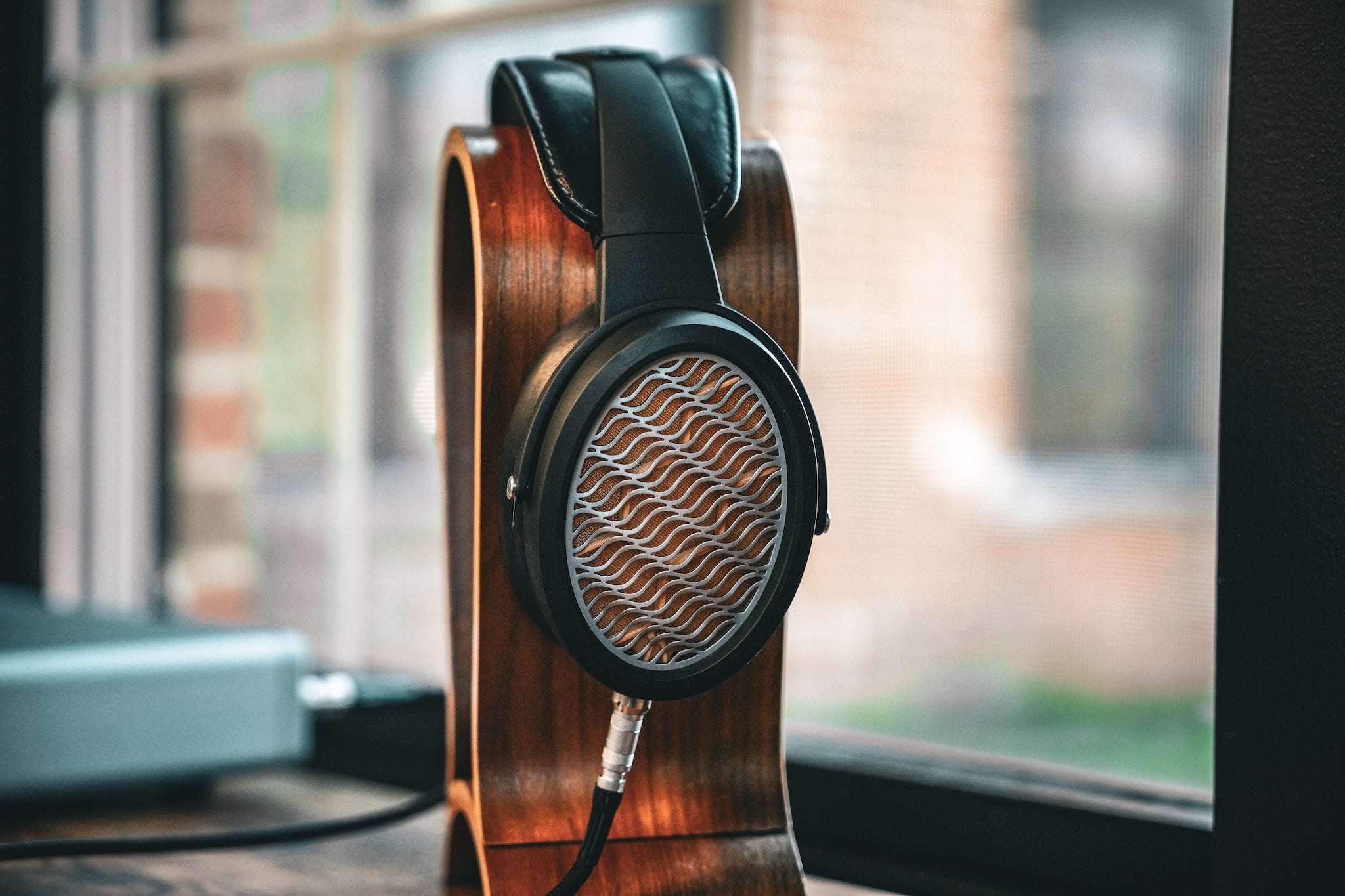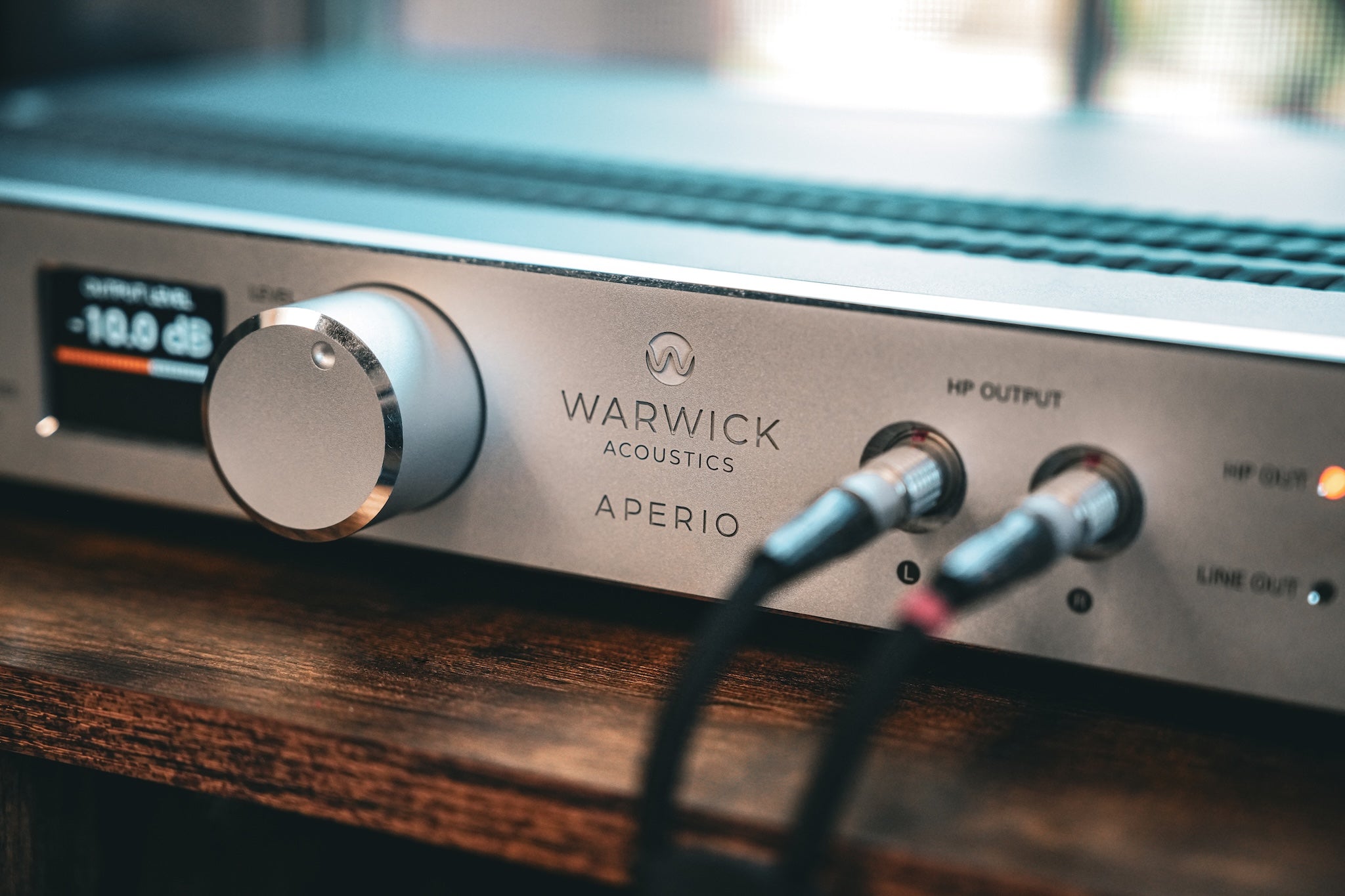There is perhaps no greater force for creativity than the drive to create something better: if not better than the competition, simply better than your past work. In the audiophile space, for every summit-fi headphone, there’s a potential improvement, and sometimes what starts as a small tweak to improve the dynamics or expand the soundstage can drive brands to build all-new systems from the ground up to achieve even more immersive sonic experiences.
Warwick Acoustics Aperio was born from this kind of desire. Where Bravura improved upon Sonoma while using the same technology at its root, Aperio is an all-new system, designed – from the transistors to the drivers – to vie for the title of best headphones in the world. With competition ranging from integrated electrostatic systems like the Sennheiser HE-1 to high end conventional systems using components like the dCS Lina and HiFiMAN Susvara to reach similar heights, can Aperio breach the ranks of the best headphones in the world?
Build and Design
Aperio is a complete system, comprising headphones and an all-in-one streaming DAC and High Voltage Amplifier purpose designed for those headphones. Our test system was the base Silver model, but you can purchase one of the more limited colors for an additional cost: Black is $40,000 and Gold is $50,000. While the DAC/Amp gets a total makeover with the color change, the headphones remain primarily black, with only the trim and grill changing for each system.
The headphones themselves are similar to Warwick’s previous headphones, with a simple, timeless design. The materials and build quality are similar to many other high end headphones, with plenty of leather, good cushioning, and frame that mixes aluminum and high quality plastics. The headphones can adjust to fit a variety of head sizes, but tend to be slightly on the “clampy” side.
Aperio includes all of the cables you need to connect the headphones, and connect to either the network or a source with USB output. You can also use S/PDIF or AES, as well as analog line input via RCA or XLR, but the cables for those options aren’t in the box. The included cables are all very high quality and have a decent amount of length to them. The network cable connection also uses XLR shielding around a standard ethernet connection on one end – a cable style that’s common in higher end studio and live sound applications that use ethernet – but you can use a standard cable if you need more length or have already invested in high quality ethernet cabling.
The DAC/Amp itself is a large device with a rock solid metal chassis and a well designed and implemented array of connections and switches on it. Much like the headphones, the build and appearance meets expectations for high end components in the $10,000 and up price range. The connections and switching are generally very simple with a knob to select the input source, a standard volume control with digital readout, and high/low switches for the inputs to match the input gain depending on your source.
For a package that bridges the space between luxury and high fidelity audio, the simplicity of the setup is a big win for Aperio. Setup can be as simple as plugging the DAC/Amp into the wall, plugging in a network cable, plugging in your headphones, and streaming your favorite tracks through your phone. Warwick Aperio provides a level of design and build quality that befits a total package costing tens of thousands of dollars, but does the sound match – or exceed – the build quality?
Sound
Having heard a number of headphone systems with price tags reaching far into the 5-digit range, there’s no longer any question as to whether or not a system of this magnitude can provide a noticeable improvement over less expensive setups, but more a question of “How does this system set itself apart?”
Aperio Headphones
The primary advantage of electrostatic headphones is their lightning fast response and incredible resolution. The primary disadvantage is that they often lack body and dynamics in the sound, and don’t provide natural sounding bass. Aperio sets itself apart almost immediately by providing a fullness and richness in the sound that exceeds the vast majority of electrostatic headphones, along with physical, well-extended bass.
In some ways, elements of Aperio’s sound can feel more like planar magnetic or dynamic drivers while firmly retaining the characteristics and advantages of electrostatic headphones. There’s a slight warmth that shows up in the lows mids and a thoroughly natural timbre which evokes dynamic drivers, while the nature of the slam in the low end has a hint of Audeze’s famous planar magnetic bass impact.
While some electrostatic headphones create an airy and diffuse imaging presentation, Aperio is more grounded. The sense of body and natural timbre lend to a wide and three-dimensional soundstage with great positioning and a lifelike feeling in the imaging. Aperio puts you in the room – or maybe even on the stage – with the performer with a natural sense of space.
Aperio is a highly revealing headphone, which delivers copious amounts of details to your ears, but it balances the revealing character with a sense of musicality that doesn’t veer into harsh or unforgiving territory. You can hear the smallest intricacy in the dynamics of Lang Lang’s piano playing, but also listen to your collection of early 2000s post-grunge noise rock without making your ears feel like they’re going to bleed.
“I Feel the Earth Move” by Carol King, provides a great example of Aperio’s performance with simple band driven recordings. Aperio puts the vocals up front, with a clear, personal feeling. The detail, dynamics, and timbre of the instruments gives you a very “in the studio” feeling: you’re not listening to a performance, you’re in the middle of it. The combination of physicality and detail in the full band hits, along with the clear positioning and imaging enhances that feeling that you’re not listening to a recording, you’re hearing music as if it’s live.
For an experience on the opposite end of the spectrum, the Blade Runner soundtrack is filled with immense soundscapes that give the impression of a soundstage that’s not just wide and deep, but also presents an excellent sense of vertical imaging. The opening track was perhaps the best display of Aperio’s fully capabilities, with deep rumbling subbass, massive dynamic shifts, and every ounce of detail in between.
“Natural Blues” by Moby helps demonstrate two sides of Aperio’s capabilities. In the 90s, Moby created a slew of electronic music anthems, built from a mix of sampled performances and soulful vocals. He more recently recreated some of his most iconic tracks with an orchestra and acoustic instruments replacing the original, more synthetic, sounds. With the original take, Aperio delivers hard hitting bass, powerful vocals, and a clean, nicely layered presentation of the electronic elements. On Reprise, the song takes a more emotional turn, starting with just an acoustic guitar, but quickly filled in with a dense, but simple orchestral arrangement. Aperio delivers a warm, natural, cohesive sound, but also gives you the tools you need to find each part and instrument and isolate it in your head. Whether you prefer the 90s dance version or the more dramatic recreation from Reprise, Aperio has the goods for an excellent experience.
Aperio DAC and Amp Comparisons
With an all-in-one system, it can be hard to decipher exactly what you’re getting from each component, and whether the simplicity of minimal components is worth the potential trade-offs in quality. While there aren’t any other amplification options available for Aperio, we were able to test with the dCS Lina (DAC only) and Weiss DAC502 to see how it stacked up.
The Aperio DAC was closer in overall sound to the Lina DAC, with exceptional detail, and a general neutral sound with a slight sweetness to it. While in focused listening, I found that Lina provided slightly more separation in the imaging and width in the soundstage, but I was hard pressed to hear the difference in most tracks just by doing a quick A/B through Roon in a more relaxed setting.
Weiss offers a slightly different sound which further enhances the timbre, as well as the feeling of body and weight in the image. I didn’t find the Weiss to be as wide as Lina or the Aperio, offering a more intimate presentation, and a little less extension in the treble. While there were some differences in the presentation, I found the two to be on approximately equal footing on a technical level, though I can imagine some finding a preference for one or the other.
Final Thoughts
No matter what you’re listening for, Aperio delivers absolutely top of the line performance, but that excellence often feels somewhat understated. When evaluating headphones, you might put on a few reference tracks with exaggerated bass or imaging elements to get a quick “wow” and declare how awesome they are. While Aperio will certainly give you some “wows” it’s not a headphone that gets you with gimmicks or exaggerated characteristics. Instead it offers clear, consistent brilliance, and beckons you to stay a little longer every time to listen to albums all the way through and rediscover your favorite music in a new light.










